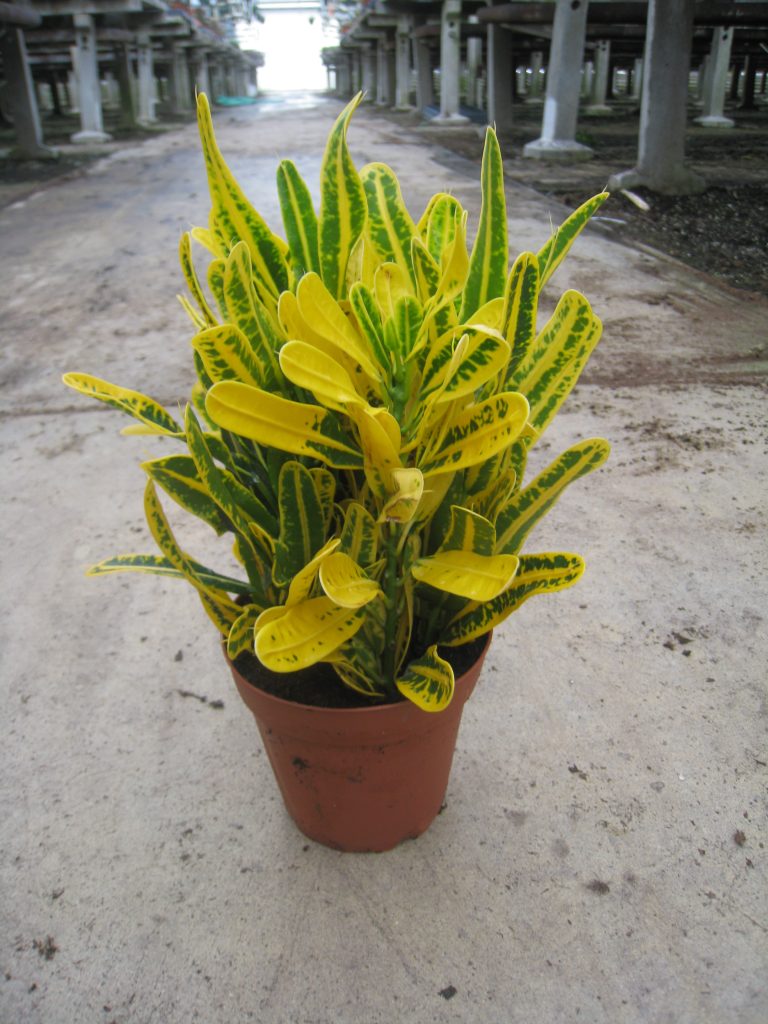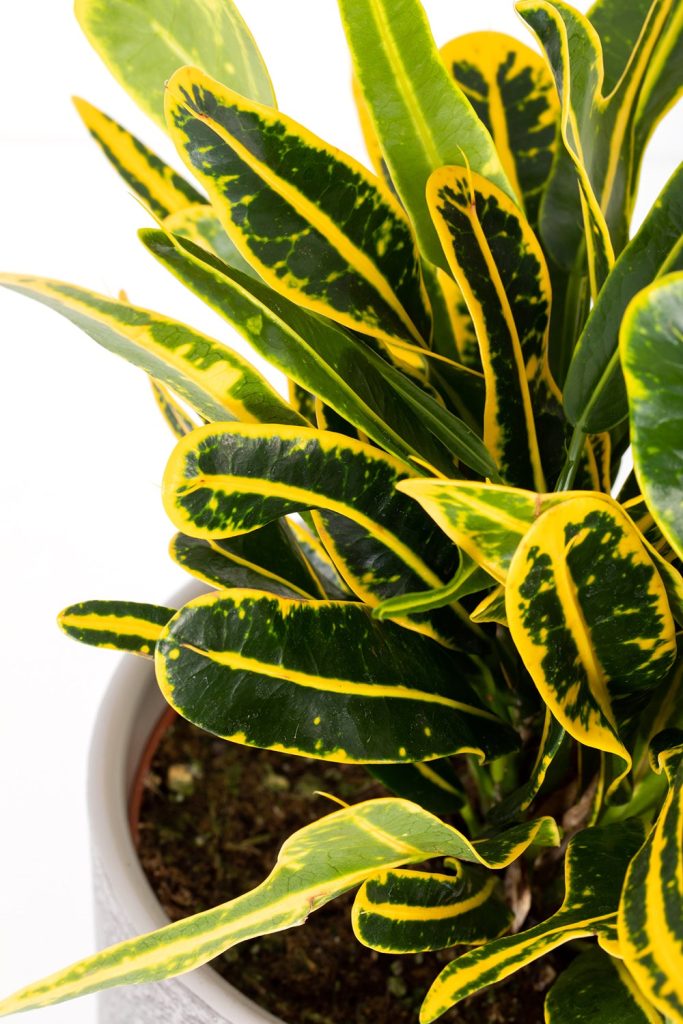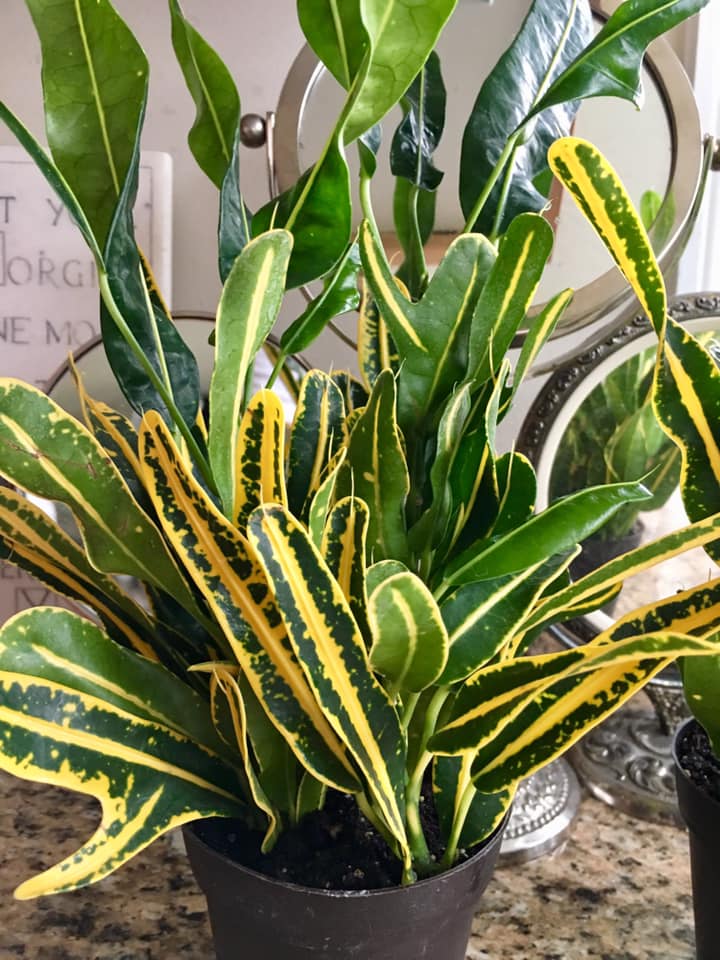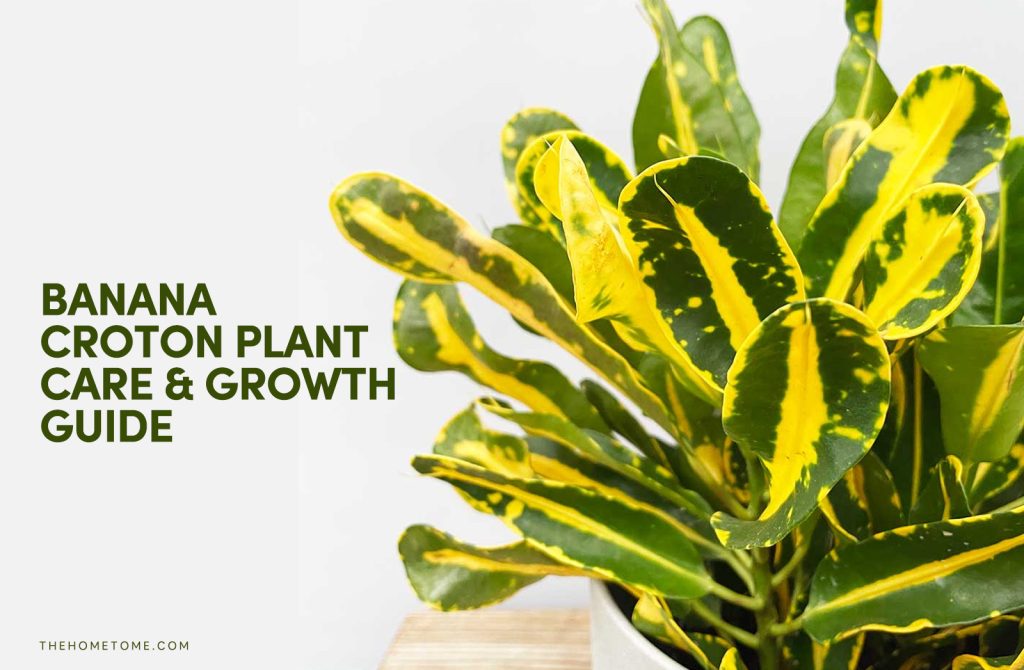The banana croton is a one-of-a-kind croton plant variety and this can be attributed to its peculiar shape, color, and size. It is popularly known for its stunning, distinct, and ravishing look.
This plant’s hue is unique, with green and yellow stripes near the top and long, thin all-green foliage.
The green and yellow leaves that have ‘thumbs’ on some of them are tall and narrow, short and wide. The astonishing and appealing qualities it shares with other croton plants are unaffected by its little stature.
The Banana Croton is a tropical shrub that thrives at temperatures above 60 degrees and can be found in northern Australia, the Pacific Islands, and Malaysia. It grows nicely on semi-shaded patios and requires only minimal but consistent watering to thrive.
Banana Croton Basic Information
Given that this plant seldom dies, getting the most out of it in terms of beauty will be a great thing, and you won’t be able to do so if you don’t know how to.
You don’t need to hire an expert to do this, simply follow this guide, and you’ll be an expert at caring for your banana croton plant including how to get started with propagation.
| Plant name | Banana Croton |
| Botanical Genus | Codiaeum Variegatum |
| Plant family | Euphorbiaceae |
| Plant type | Perennial |
| Classification | Tropical Shrub |
| Native | Northern Australia, Malaysia |
| Soil type | Damp soil |
| Size | The height ranges from 12 inches to 8 feet. |
| Watering | Adequate watering |
| Light | Bright indirect sunlight |
| Toxicity | Vastly toxic |
| Foliage Color | Green, yellow |
Banana Croton Plant Propagation
Crotons can be grown by seed or by vegetative reproduction. Croton plant propagation is simple and can be accomplished by anyone, including you if you follow the step-by-step instructions we have provided. We’ll concentrate on rooted stem cuttings as a method of propagation.

You should know that all stem sections are beneficial in this operation, although it is recommended that you cut from a healthy and mature banana croton plant, taking care not to harm the plant tissues while cutting.
Because stem cuttings may be easily transplanted to different locations, it is simple to grow many of them on the same site. You should also note that up to 4-5 stem cuttings can be grown in the same container to save money.
Propagation Instruments
- A banana croton plant that is in good health.
- Gloves for handling
- A well-balanced and nutrient-dense soil blend
- Cutters that have been disinfected
- A new container or pot.
Banana croton propagation steps
- Step 1. Take the croton plant and remove all the leaves from the stem.
- Step 2. Cut the stem 8-12 inches long.
- Step 3. Remove the skin of the stem at the cut edge to allow more room for the roots to sprout.
- Step 4. Finally, set it in the medium you’ve prepared for its growth.
- Step 5. After about 3 weeks, you should see some leaves emerging.
- Step 6. The banana croton’s roots and leaves should have been well-developed after about 8 weeks.
- Step 7. After this procedure, you should re-pot the plant, but be careful not to stress it.
Banana Croton Plant Care Guide
If you are wondering how to care for your banana croton plants, we’ve summarized everything you need to know about the care guide for this lovely home plant.
1. Temperature
While keeping your banana Croton indoors, be careful to keep it at a comfortable temperature. It does not do well in hot conditions. Keep the banana Croton as cool as possible during the hottest hours of the day.
The best temperature for your banana Croton is between 22 and 27 degrees Celsius. It should be kept next to a bright window and watered regularly.

2. Light
Your banana croton plant prefers bright, but not direct, light. 4-5 hours of direct light per day should suffice. Ideally, you should place them near a window where they will receive sufficient sunshine, resulting in a brilliantly colorful and lovely plant.
If your plant does not receive enough sunshine, the leaves will be pale and green, rather than the stunning elegance that could have been achieved with sufficient sunlight.
3. Humidity
Because Banana Croton is a tropical shrub, it thrives in warm, humid conditions. To prevent root rot, make sure the soil is wet but not soggy. With the right humidity, the banana croton will thrive.
4. Soil
The soil in which the banana croton will be planted should be able to drain water efficiently without losing all of its contents. It is in this kind of environment that it will be able to adapt and flourish.
5. Fertilizer
Fertilizers are generally beneficial to your soil and plants. However, if the nutrients become too high, they will harm the roots and leaves of your plant, causing more harm than benefit. Once every two months, you should feed your plant.
6. Watering
The croton plant needs water to survive, but also cannot survive when it is excessively watered. You could water the banana croton plant once a week, or preferably, to know when this plant requires water, simply place your hand on the soil to feel if it is dry/ hard. Once you feel this, it is time to water, in the right quantity.
Also, you could take a look at your plant, once you see them drooping or looking dehydrated, you could also add some water.

7. Pruning
Pruning is an important element of plant maintenance because it removes dead and diseased leaves. To prevent the disease from spreading to your other plants, disinfect your shears after pruning, ideally with an alcohol solution.
Also, use additional caution when trimming to avoid damaging the plant. Your banana croton could be pruned 2-4 times each year.
Banana Croton Growing Hints
- You’ll need a 6″ deep plastic pot with drainage holes at the bottom to grow your plant.
- Make sure your crotons are in a semi-shaded spot that gets direct sunlight but isn’t too hot.
- Feed your banana croton every two months during the autumn and winter.
- Be mindful of overwatering your plants, and keep an eye out for nutrient deficiency.
- You may also add vermicompost to your soil to boost nutrient levels, as it will aid the growth of your banana croton plant and the prevention of diseases that this plant is prone to
- Your banana croton plant does not want to be relocated, which can result in leaf shedding.
- Neem oil is an environmentally friendly pesticide that may be used to treat your plants, and also prevent pests.
Problems With Banana Croton
The banana croton plant is a tough, low-maintenance cost plant that is resistant to pests.
However, some diseases can influence the growth of your plant and, in some situations, lead it to die. Take notice of some diseases that are related to the banana croton plant, which we have described here, and clean your plant with insecticidal and pest control products regularly.
1. Root Rot
One of the most common banana croton plant killers is root rot. Over-watering is the most common cause of this. Root rot is characterized by a terrible odor. Make sure your root is well aerated to avoid this. Avoid getting the soil excessively wet, and make sure your plant will show signs of dehydration on the leaves if it needs water.
2. Mealybugs
Mealybugs can wreak havoc on your garden’s other plants as well as your banana croton. Take note of this, and if you find a mealy insect on your plant, treat it immediately to prevent it from spreading. You can use neem oil to treat your plant and leave it outside for a while, or you can clean it with insecticidal soap.
Wear protective shields, overalls, and hand gloves if you’re cleaning with this soap, to prevent direct contact with your skin.
3. Pest infestations
Banana Crotons are prone to a variety of pest infestations. Thrips, red spider mites, and Mealybugs are examples of these pests. They can cause significant damage to plants if not addressed as soon as they are discovered.
FAQs
How do I know when to water my banana croton plant?
When I ingest a banana croton leaf or sap, what happens?
Final thoughts
The Banana croton stands out among the other croton cultivars due to its distinctive features and size. This plant’s elegance and beauty cannot be overstated, and it is a lovely and non-stressful houseplant for your home.
We’ve highlighted the care instructions for your lovely banana croton plant, and what you need to take note of for successful propagation.
We’ve also discussed the consequences of swallowing the plant or coming into direct touch with it. Wear your hand gloves next time you want to care for your croton plant to avoid skin irritation and wash your hands completely with soap and water once you’re done.
More on Croton houseplants:
